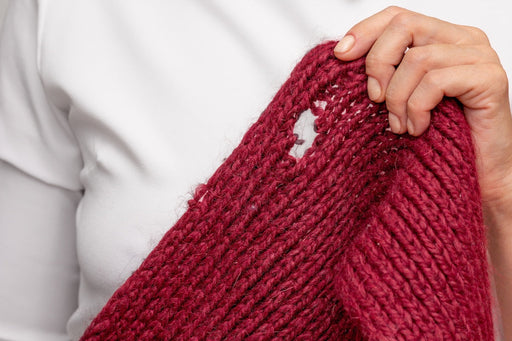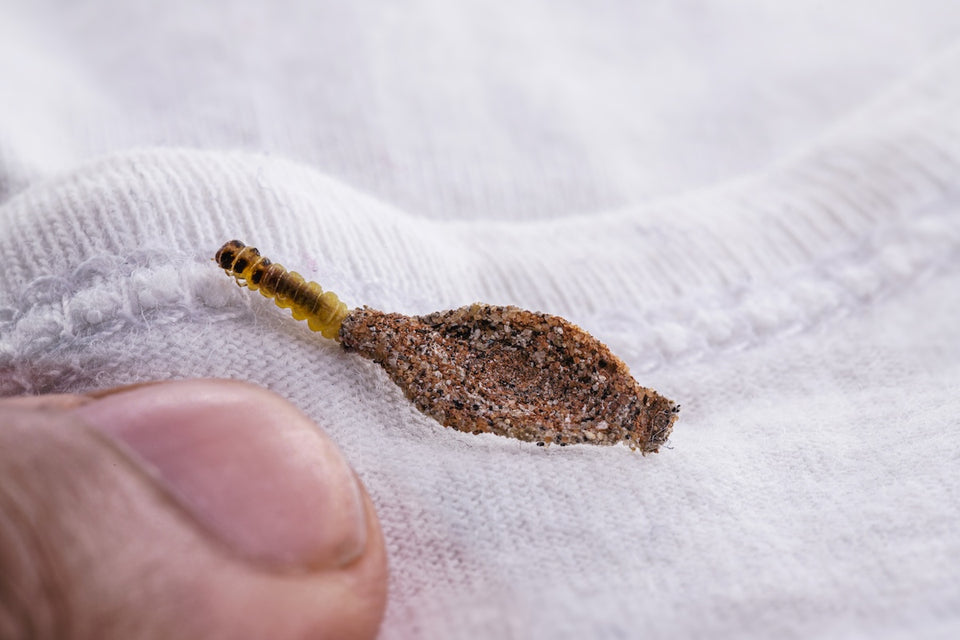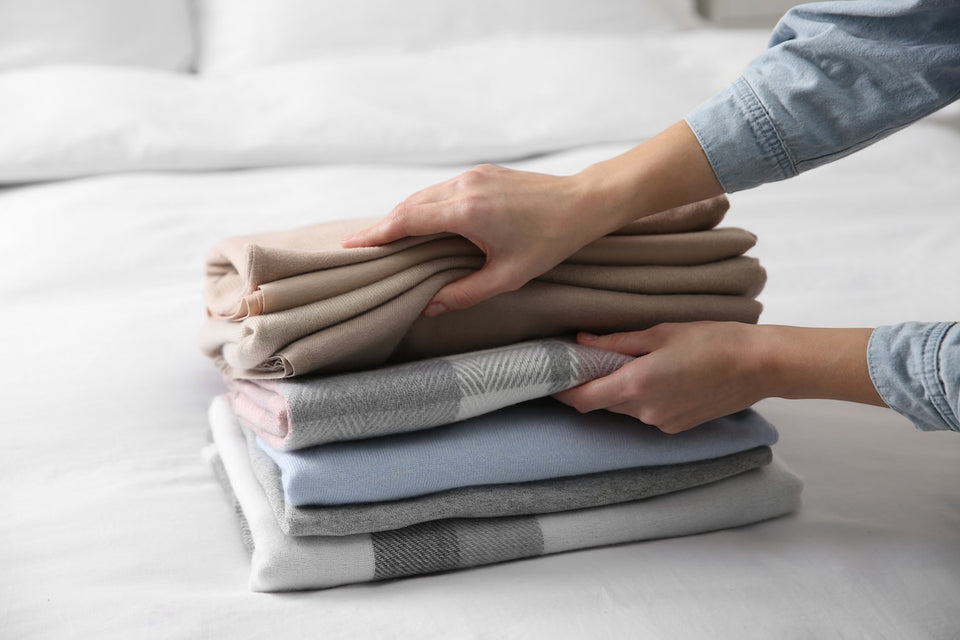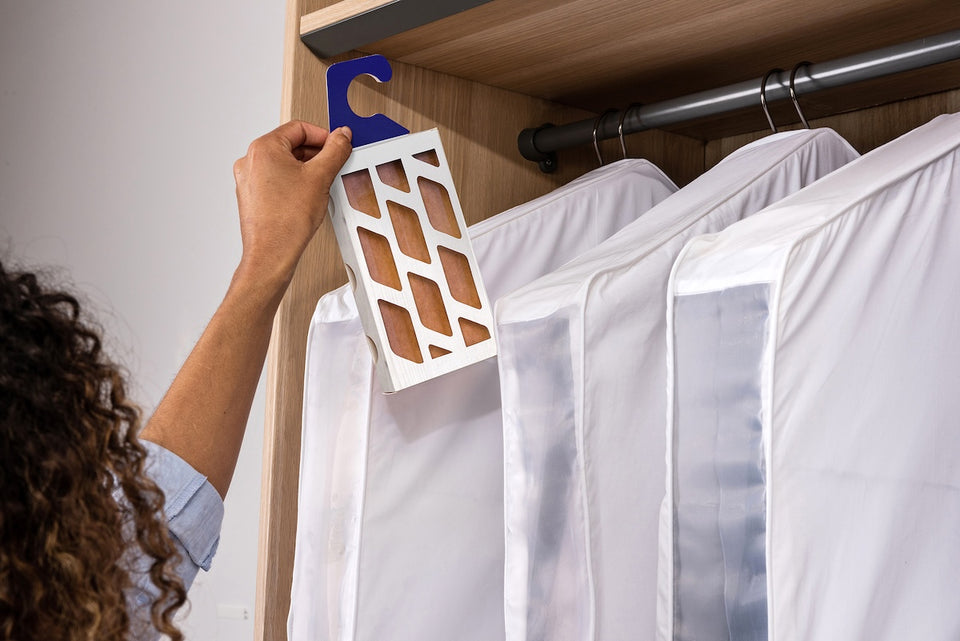Moth Damage Uncovered: Why It Happens and What You Can Do About It

You reach for your favourite jumper, only to find tiny holes scattered across the fabric. It is one of the most frustrating experiences for anyone who cares about their wardrobe. But these holes are not random. They are the result of a very specific pest problem - Clothes Moths, or more accurately, their larvae.
What is Really Causing the Damage?
Clothes Moths belong to the family Tineidae, and the two most common species responsible for damage are the Webbing Clothes Moth (Tineola bisselliella) and the Case Bearing Clothes Moth (Tinea pellionella). These moths are only about 6 to 8 millimetres in length and are rarely seen flying because they prefer dark and undisturbed spaces. Adult moths do not feed on fabrics. Instead, they live for only a few weeks with the sole purpose of reproduction. Females lay between 40 and 50 eggs on or near suitable food sources. Once the eggs hatch, the larvae begin feeding on keratin, a fibrous protein found in animal based fibres. This includes wool, silk, cashmere, mohair, fur, feathers, and even leather.

The larva stage can last from 2 months to 30 months depending on environmental conditions such as temperature and humidity. Warmer environments speed up development, making infestations harder to detect and control if left unmonitored.
How to Recognise Moth Damage
Damage caused by Clothes Moths is often mistaken for wear and tear, but it has distinctive characteristics. Early signs include:
- Irregular holes in wool, silk, or cashmere garments
- Bald patches or thinning fabric in hidden areas
- Fine webbing or silken threads near the damage site
- Small cream coloured larvae or shed casings
- A gritty or dusty residue in wardrobe corners or drawer seams
Larvae prefer to feed in concealed areas where fabrics are undisturbed. That means the damage usually appears on underarms, inside collars, beneath cuffs, or along hemlines - areas not often checked.
What Items Are Most Likely to Be Targeted
Any material made from animal fibres is at risk. High risk items include wool and cashmere sweaters, scarves, and coats, which are often stored during warmer months and left undisturbed. Silk dresses, shirts, and linings are also particularly vulnerable due to their delicate fibres and infrequent use. Even plant based fabrics which are heavily soiled with food stains or human perspiration are not spared by hungry moth larvae.

Suits made from wool blends can be targeted, especially if worn occasionally and returned to wardrobes without cleaning. Feathers used in duvets, cushions, or vintage accessories such as hats or shawls provide another appealing food source for larvae.
Fur trim on coats or hats, whether real or faux containing animal-derived fibres, is also susceptible. Upholstered furniture with natural stuffing, particularly in less-used rooms, offers the ideal dark and quiet environment for moths to thrive.
Wool rugs and carpets, especially those hidden beneath furniture or in corners, can sustain significant damage without immediate notice. Additionally, stored knitting yarns, felts, and craft materials made from animal fibres are often overlooked and can become breeding grounds if not sealed and checked regularly.
If you store clothes or textiles seasonally, these items are especially vulnerable if not cleaned and protected properly.
Why Cleanliness Makes a Difference
Moths are more likely to target soiled items. Garments that have been worn and contain traces of sweat, skin cells, oils, or food spills are much easier for larvae to digest. Even invisible residues can make an item a prime target.
This is why cleaning garments before storage is so important. Dry cleaning or laundering at high temperatures eliminates both food residue and any potential eggs or larvae already on the fabric.

Breaking the Cycle: What Actually Works
To stop Clothes Moth damage, you must disrupt their lifecycle. Here is how:
Inspect and Isolate
Empty your wardrobe or storage unit completely. Examine each item under bright lighting. Bag up anything showing signs of activity and keep it separate until treated.
Clean and Treat
Dry clean or launder all garments. For delicate or non-washable items, place them in sealed bags and freeze them for at least 72 hours. Thoroughly vacuum all wardrobe surfaces, shelves and crevices. Wipe down with a cleaning solution to remove eggs and residue.
Use Moth Traps
Place pheromone traps near clothing and inside wardrobes. These attract and trap adult male moths, reducing their ability to reproduce and giving you early warning of new activity.
Store Smart
Use breathable cotton garment bags rather than plastic, which can trap moisture and encourage mould. Store cleaned items with natural repellents such as cedar blocks or lavender sachets.
Keep It Moving
Air circulation deters moths. Open wardrobe doors regularly, move hangers, and shake out clothes. Vacuum storage areas monthly to remove dust and any developing pests.
When to Seek Help
If your moth problem is persistent or larger than originally anticipated, you may like to consider a Clothes Moth Killer Kit or a Carpet Moth Killer Kit which will eradicate moths, larvae and eggs and provide ongoing protection.
If the problem persists despite these efforts, it may indicate a larger infestation. In that case, a professional pest control service can assess the situation and apply a targeted solution. They can also inspect flooring, vents, and insulation for hidden sources.
Final Word
Clothes Moth damage is not random. It is the result of specific conditions that attract these pests and allow them to thrive. Understanding their habits, lifecycle, and environmental preferences is the key to protecting your clothing and textiles.

With consistent care, proper storage, and early detection, you can keep your wardrobe free from damage. Explore MothPrevention's full range of traps, repellents, and breathable storage solutions trusted by over 250,000 customers to maintain a moth free home.
About MothPrevention
MothPrevention® speak to customers every day about their clothes moth issues - clothes moths are a species that are ever increasing and that can cause significant damage to clothes, carpets and other home textiles.
To date, we’ve helped over 250,000 customers deal with their moth problems. We have developed professional grade solutions including proprietary pheromones and trap design engineered to the highest production standards.





